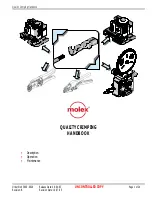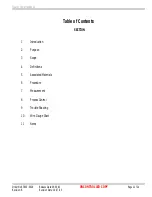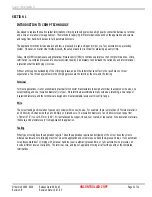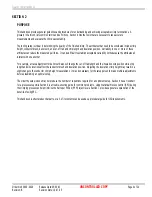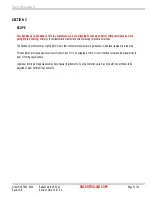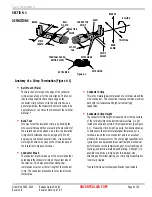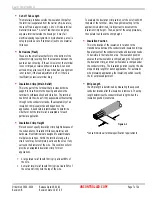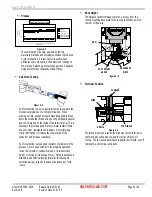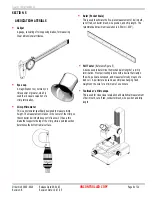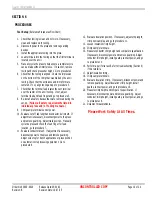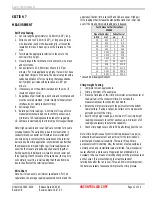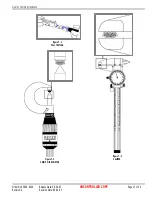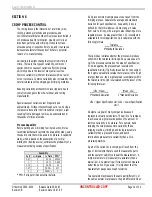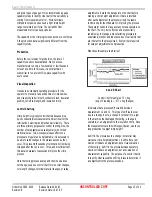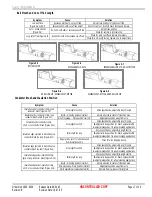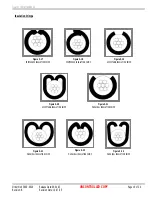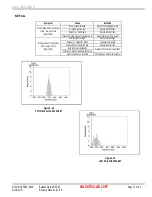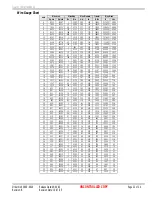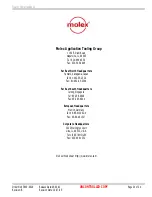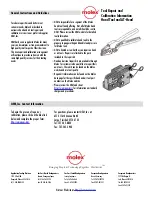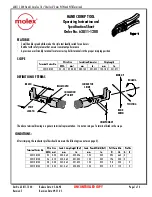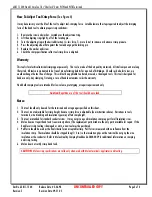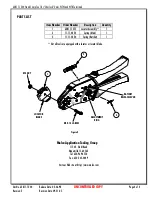
Quality Crimp Handbook
Order No 63800-0029
Release Date:09-04-03
UNCONTROLLED COPY
Page 14 of 24
Revision: B
Revision Date: 10-07-05
SECTION 8
CRIMP PROCESS CONTROL
The crimp process is the interaction of a terminal, wire,
tooling, personnel, methods and procedures, and
environmental attributes. When this process is controlled, it
will produce a quality termination. Quality control is an
important part of quality crimping. It should not take
excessive setup or inspection time to do, and it can save a
harness manufacturer thousands of dollars in potential
rework or re-manufacturing.
Variability is the slight change that occurs from crimp to
crimp. There are two types of variability, common or
special. Common causes of variation affect the process
uniformly and are the result of many small sources.
Common variability is inherent tolerances within a reel of
wire or terminals. Common variability also is created by the
natural tolerances of the stripping and crimping machines.
Reducing variability at the common level typically has to
come from changes to the wire, terminal, and tooling
manufacturer.
Special causes of variation occur irregularly and
unpredictably. Without checks throughout a run, having a
tool become loose after the first hundred crimps or a jam
resulting from a damaged tool may be undetected until
thousands of crimps are made.
Process Capability
Before putting a new crimping tool in production, Molex
recommends that each customer do a capability study, using
the specific wire that will be used in its process. A capability
study, which is based on the assumption of a normal
distribution (bell-type curve), estimates the probability of a
measurement being outside of specification.
Capability
CpK +/- Sigma % Yield PPM*
0.67
2
95.45
45,500
1
3
99.73
2,699
1.33
4
99.99
63
1.67
5
99.99+
0.57
2
6
99.99++
0
* PPM - Parts per million potential defects.
A 25 piece minimum sample needs to be taken from the
crimping process. Calculate the average and standard
deviation for each specification. A capability index is
defined by the formula below. Cp may range in value
from zero to infinity, with a larger value indicating a more
capable process. A value greater than 1.33 is considered
acceptable for most applications. Cp is calculated with the
following formula.
___Tolerance___
6*Standard Deviation
The CpK index indicates whether the process will produce
units within the tolerance limits. CpK has a value equal to
Cp if the process is centered on the mean of specification;
if CpK is negative, the process mean is outside the
specification limits; if CpK is between 0 and 1 then some of
the 6 sigma spread falls outside the tolerance limits. If CpK
is larger than one, the 6-sigma spread is completely within
the tolerance limits. CpK is calculated with the lesser of the
following formulas:
__(USL - Mean)__
__ (Mean - LSL)__
3*Standard Deviation
3*Standard Deviation
USL = Upper Specification Limit, LSL = Lower Specification
Limit
Six sigma is a goal of many companies because it
represents virtually zero defects. The ability of a company
to achieve a six-sigma level depends on the amount of
common variability in its process. For example, hand
stripping the wire produces more variability than a
stripping machine; crimping hand tools produce more
variability than a press and die set, and bench
terminations produce more variability than a wire-
processing machine.
A part of the variability in crimping will result from the
type of instruments that are used to measure the parts
and the operator's ability to repeat the measurement. A
crimp micrometer will measure more accurately than a
dial caliper. An automatic pull force system will measure
better than a hook type scale. It is important that the
measurement gauge has enough resolution.
Two operators may measure the same part differently, or
the same operator may measure the part differently when


